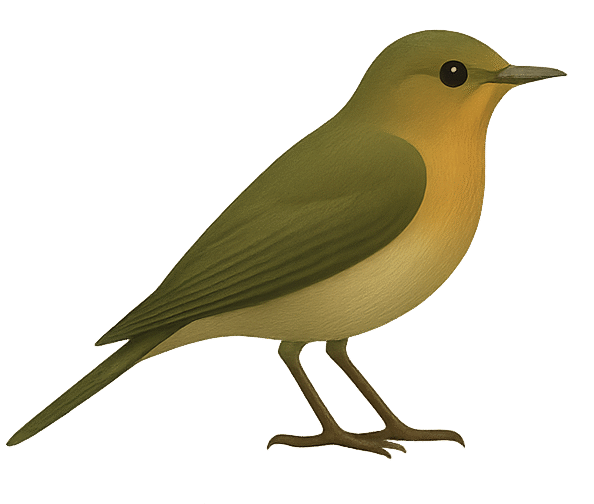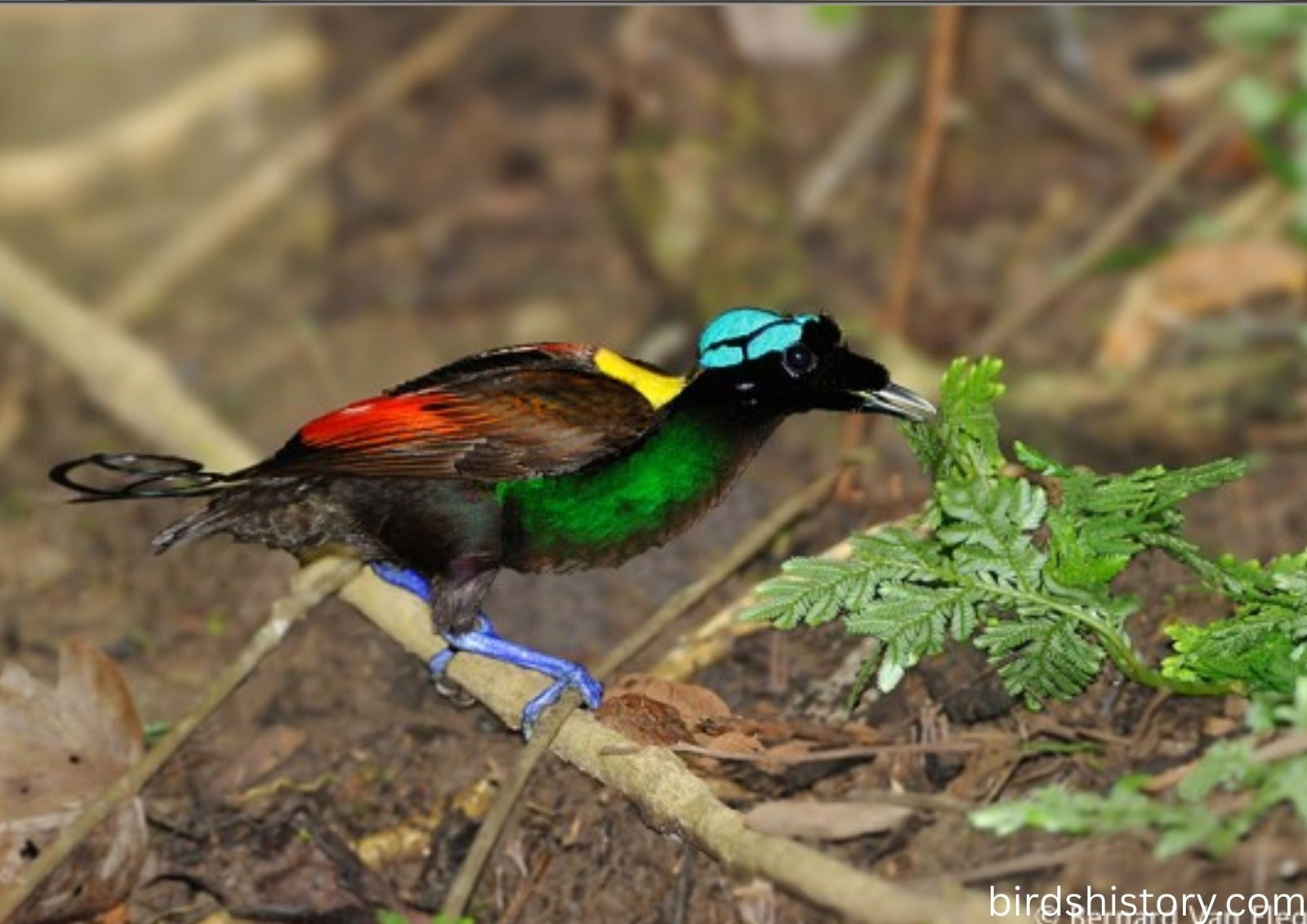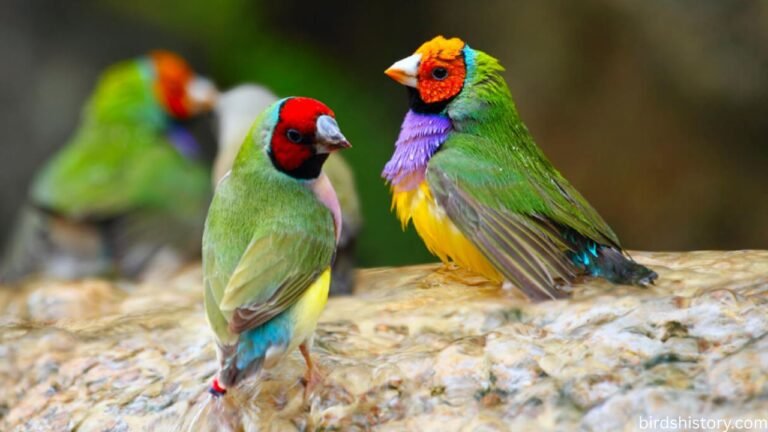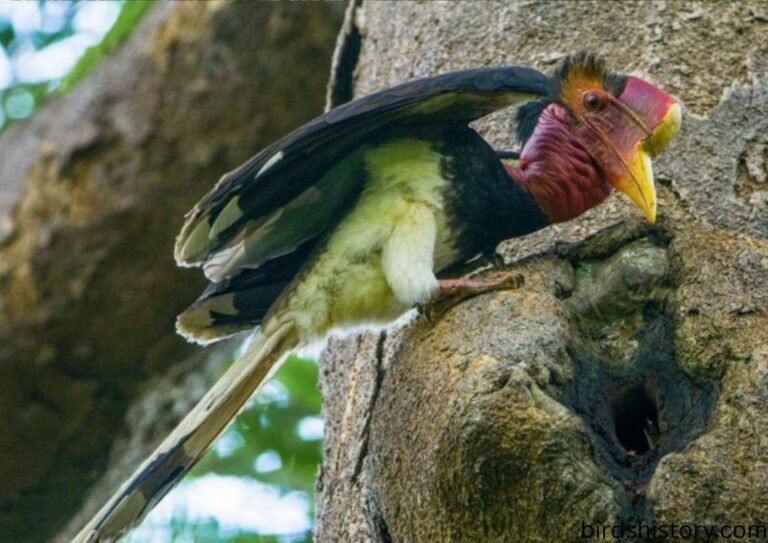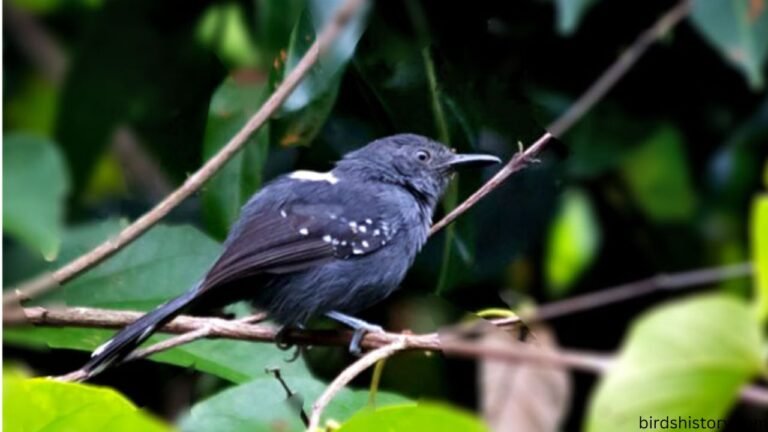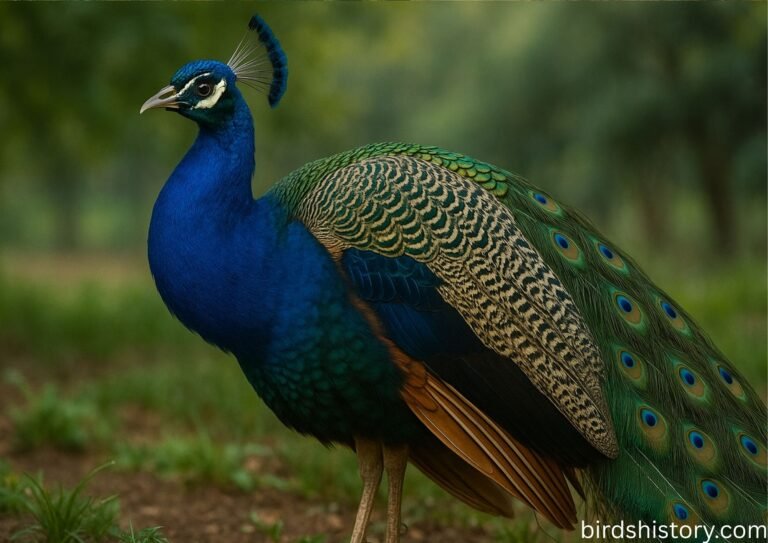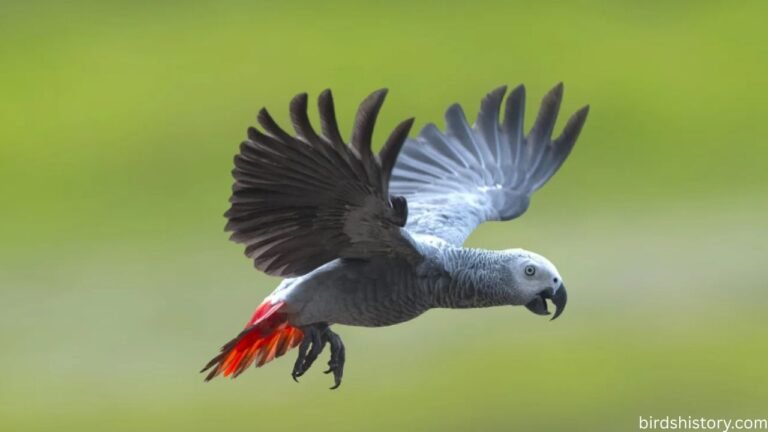Wilsons Bird of paradise: Nature’s Living Jewel
Wilsons Bird of paradise: Some birds look like they stepped right out of a painter’s imagination, and few fit that description better than the Wilson’s Bird-of-paradise. With its striking mix of crimson, yellow, black, and turquoise blue, this bird is often described as one of the most spectacularly colorful creatures on Earth.
The Wilson’s Bird-of-paradise (Cicinnurus respublica) is exclusively found on a few islands within Indonesia’s West Papuan region. Its striking appearance, captivating mating rituals, and vibrant feathers have earned it global recognition.
Also read: /the-great-argus/
Here’s a fun fact to get you hooked: Unlike most birds that rely solely on feathers for display, the Wilson’s Bird-of-paradise also flaunts its bare turquoise-blue crown, which glows under forest light and makes it look like something from another planet.
Let’s dive into its taxonomy, beauty, habits, and why protecting this species matters for biodiversity.
Wilsons Bird of paradise Taxonomy / Classification
All birds are a part of the larger evolutionary family. Here’s where Wilson’s Bird-of-paradise belongs:
- Common Name: Wilson’s Bird-of-paradise
- Scientific Name: Cicinnurus respublica
- Family: Paradisaeidae (Birds-of-paradise)
- Order: Passeriformes
- Class: Aves
The family Paradisaeidae is famous for its flamboyant members. While the Wilson’s Bird-of-paradise is one of the smallest species, it is among the most dazzling in both color and courtship displays.
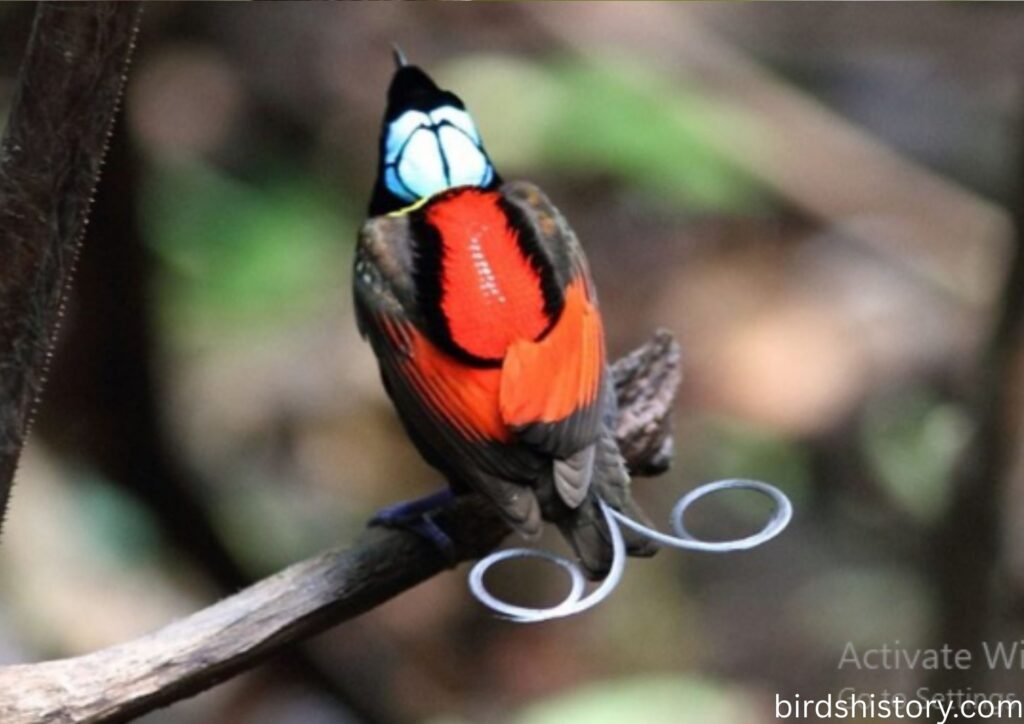
Wilsons Bird of paradise Physical Description
The Wilson’s Bird-of-paradise is a masterpiece of natural design.
- Size: Small, measuring only 16 cm (6.3 inches) in length.
- Weight: Around 53–67 grams, making it lightweight and agile.
- Male Appearance:
- A brilliant scarlet back and nape.
- Bright yellow mantle (between wings).
- Black wings and tail.
- Vivid green breast and throat.
- A glowing, bare turquoise-blue crown with a black double cross-pattern.
- Two elegant tail feathers curving into spirals at the end.
- Female Appearance (Sexual Dimorphism):
- Much less colorful, with brown plumage and a pale belly for camouflage.
- Lacks the long spiral tail feathers.
This striking difference between males and females serves an evolutionary purpose: males compete with flamboyance, while females stay concealed to protect nests and chicks.
Wilsons Bird of paradise Habitat and Range
The Wilson’s Bird-of-paradise has one of the most restricted ranges among birds.
- Location: Found only on Waigeo and Batanta Islands, part of the Raja Ampat Islands in West Papua, Indonesia.
- Preferred Habitat: Lowland rainforests and hilly forest edges, usually at elevations below 1,200 meters.
- Microhabitat Behavior: Prefers dense undergrowth and open forest floors where males can clear display courts for mating dances.
Because its range is so limited, habitat loss poses a significant risk to the species.
Wilsons Bird of paradise Diet and Feeding Habits
Despite their exotic looks, Wilson’s Birds-of-paradise are opportunistic feeders.
- Diet:
- Fruits (especially figs, berries, and small rainforest fruits).
- Insects (beetles, caterpillars, grasshoppers).
- Other small arthropods.
- Feeding Style:
- They typically look for food in the forest at mid-level and lower heights.
- Hop between branches, plucking fruits and insects.
- Sometimes descend to the ground for fallen fruit.
Their diet contributes to seed dispersal, playing a vital role in forest regeneration.
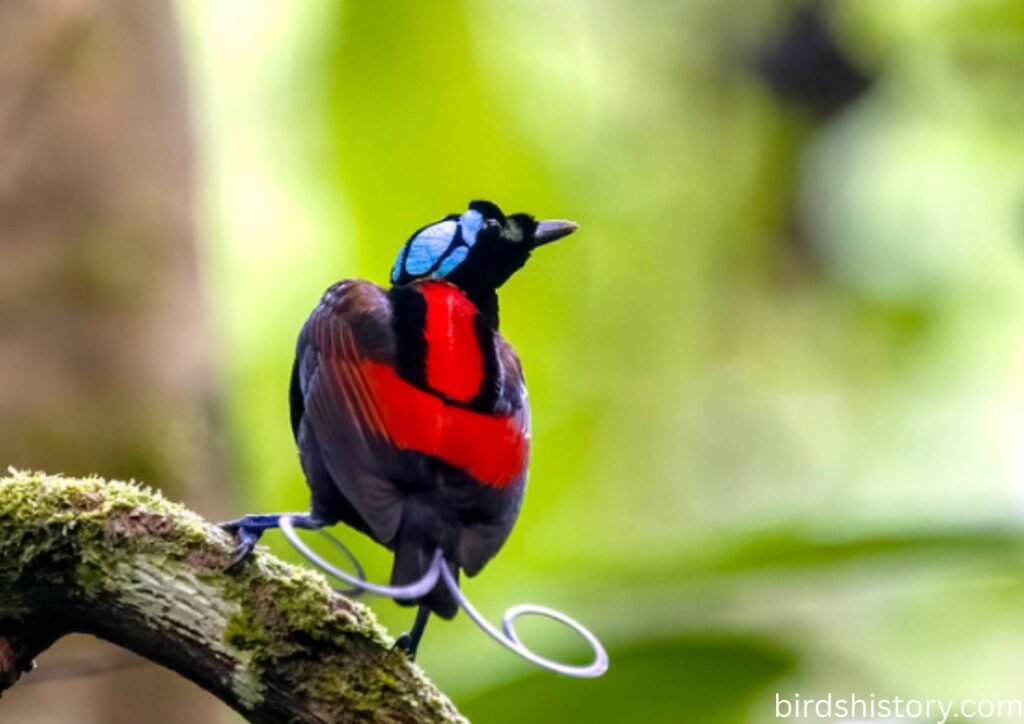
Wilsons Bird of paradise Behavior and Lifestyle
The Wilson’s Bird-of-paradise is as fascinating in behavior as in appearance.
- Social Behavior: Generally solitary outside the breeding season.
- Activity Pattern: Active during the day; males spend much of their time preparing and maintaining display courts.
- Flight: Agile but short-distance flyers; they prefer hopping and gliding among trees.
- Vocalizations: Emit a series of high-pitched whistles and clicks to communicate with potential mates or signal alarm.
- Courtship Displays:
- The male bird carefully clears a section of the forest floor, which he uses as a stage for his performance.
- They perform elaborate dances, flaring wings, showing off the glowing crown, and displaying spiral tail feathers.
- Females visit display courts, choosing mates based on performance and appearance.
This intricate behavior highlights sexual selection at its peak.
Reproduction and Lifespan
Breeding in Wilson’s Bird-of-paradise follows a fascinating rhythm:
- Breeding Season: Largely coincides with the fruiting season in the forest, ensuring food availability.
- Courtship: Males engage in extended dances that can last for hours, hoping to impress visiting females.
- Nesting: Females alone build cup-shaped nests, usually hidden in dense foliage.
- Eggs: Typically 1–2 pale cream or buff-colored eggs per clutch.
- Only the female is responsible for incubating the eggs and raising the young.
- Lifespan:
- Wild: Estimated at 5–8 years.
- Captivity: Rarely kept, so data is limited, but potentially longer with care.
Predators and Threats
Being small and ground-dwelling at times, Wilson’s Bird-of-paradise faces multiple threats:
- Natural Predators:
- Raptors (hawks, eagles).
- Snakes and monitor lizards (prey on eggs and chicks).
- Feral cats introduced by humans.
- Environmental Threats:
- Deforestation for agriculture and logging.
- Climate change impacting fruiting cycles of trees.
- Human Impact:
- Habitat encroachment.
- Illegal trapping, though less common due to remote range.
Conservation Status
The International Union for Conservation of Nature (IUCN) has classified the Wilson’s Bird-of-paradise as a species that is “Near Threatened,” which means it may become endangered in the future.
- Population Trends: Declining, but still relatively stable in undisturbed forest areas.
- Key Threats: Logging, agricultural expansion, and limited range.
- Conservation Efforts:
- Protected within Raja Ampat Islands Nature Reserves.
- Local awareness programs highlight the species’ uniqueness to encourage protection.
- Birdwatching eco-tourism in Raja Ampat provides economic incentives for conservation.
Interesting Facts about Wilson’s Bird-of-paradise
- British naturalist Alfred Russel Wallace was the first to describe the species in the 19th century, calling it one of the most beautiful birds he had ever seen.
- Unlike many birds-of-paradise, males of this species display on the ground rather than in trees.
- The turquoise crown is not feathered but bare skin, making it especially vibrant.
- The spiral-shaped tail feathers are unique within the bird-of-paradise family.
- It has become a flagship species for conservation in the Raja Ampat Islands.
- Some local cultures view the bird as a symbol of paradise and rarity, contributing to its mystique.
- Birdwatchers from around the world travel to remote Indonesian islands specifically to catch a glimpse of this rare jewel.
Conclusion / Summary
The Wilson’s Bird-of-paradise is truly one of nature’s living masterpieces. Small yet brilliantly colored, it embodies the artistry of evolution through its dazzling feathers, courtship rituals, and specialized habitat.
Although it is not yet critically endangered, its limited range makes it highly vulnerable to habitat loss and human interference. Protecting the forests of West Papua is crucial to ensuring that this spectacular bird continues to enchant future generations.
Studying and appreciating birds like Wilson’s Bird-of-paradise reminds us not only of the diversity of life but also of our responsibility to safeguard these treasures. After all, when a bird is so rare and beautiful that it feels like a dream, it deserves our respect and protection.
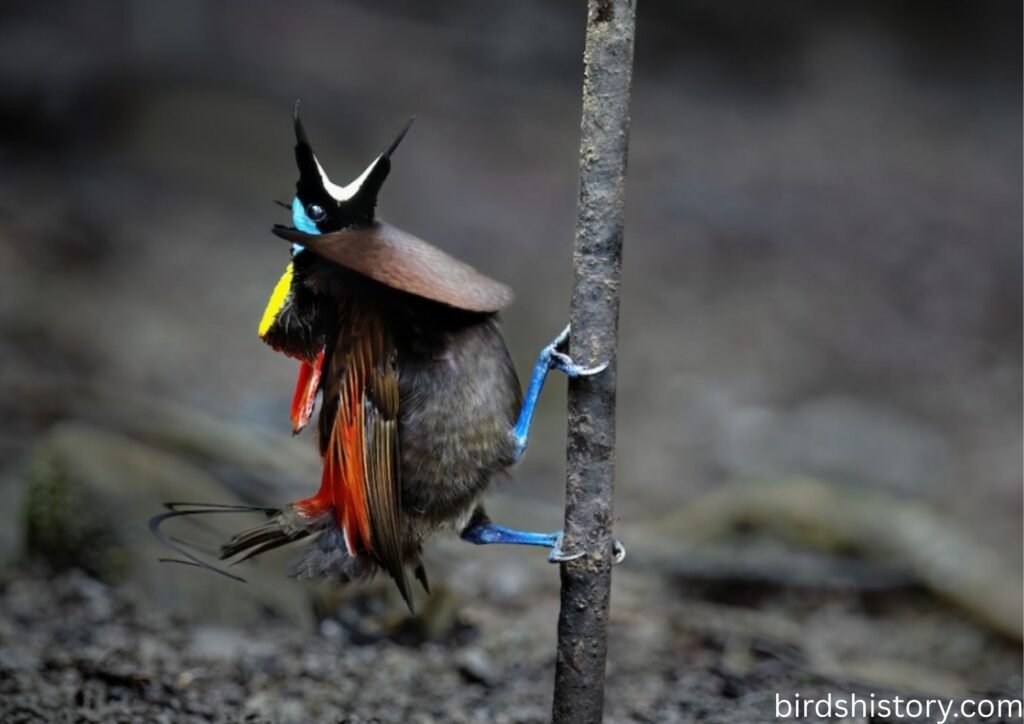
FAQs
What is the scientific name of Wilson’s Bird-of-paradise?
Cicinnurus respublica.
Where is Wilson’s Bird-of-paradise found?
The Wilson’s Bird-of-paradise is native to only two islands in West Papua, Indonesia: Waigeo and Batanta.
How big is Wilson’s Bird-of-paradise?
About 16 cm (6.3 inches) long and weighing 53–67 grams.
What do Wilson’s Birds-of-paradise eat?
Fruits, berries, insects, and small arthropods.
Why is Wilson’s Bird-of-paradise so colorful?
Males evolved bright colors and unique tail feathers to attract mates.
What is the lifespan of Wilson’s Bird-of-paradise?
5–8 years in the wild, possibly longer in safe conditions.
Are Wilson’s Birds-of-paradise endangered?
They are listed as Near Threatened by the IUCN.
Who discovered Wilson’s Bird-of-paradise?
It was first described by Alfred Russel Wallace in the 19th century.
Do females look as colorful as males?
There is a significant difference between the males and females; the females are brown and blend in with their surroundings, while the males have vibrant, striking colors.
Why is conservation important for this bird?
Its limited range and declining habitat make it vulnerable, so protection is key to survival.
